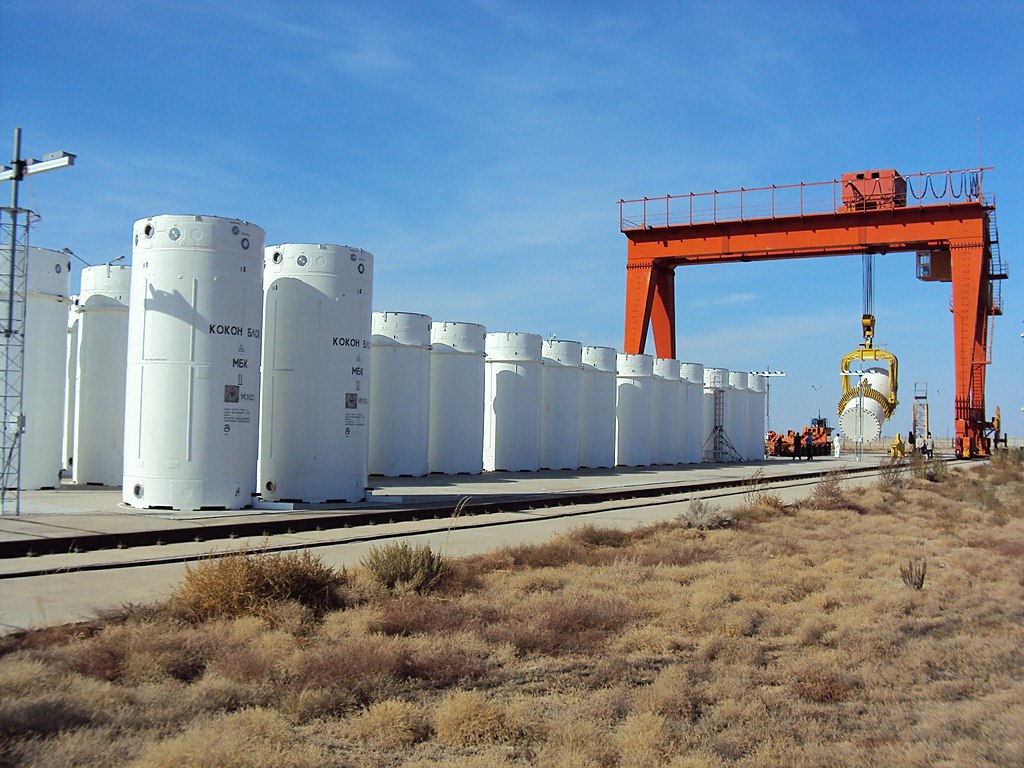
The world faces a formidable challenge with over a quarter million metric tons of highly radioactive waste awaiting permanent disposal near nuclear power plants and weapons production facilities. In the United States alone, the burden exceeds 90,000 metric tons, prompting corrosion experts to investigate the degradation of materials proposed for long-term nuclear waste storage containers. The urgency stems from the increasing risks posed by aging containers, some of which have already started leaking hazardous contents. In this article, we explore the origins of this nuclear waste, the ongoing efforts to manage it, and the vital role corrosion experts play in predicting, preventing, and addressing potential leakage.
In the United States, approximately 80,000 metric tons of spent nuclear fuel are stored in casks at power stations across the country. The fuel is normally 4 m long narrow tubes (1 cm in diameter) packed with tiny uranium dioxide pellets. Hundreds of these fuel-rod tubes are packed together to make fuel-rod assemblies. In a commercial nuclear reactor, hundreds of assemblies work together to generate high heat (and steam) from breaking uranium nuclei, which drives turbines that generate electricity.
Nuclear fuel stops working efficiently after around 5 years in a reactor that is constantly struck with radiation. Operators of reactors remove spent fuel and replace it with new fuel. At that time, the spent fuel, which still retains around 95% of its initial uranium, is extremely hot and dangerous due to a mixture of radioactive plutonium, fission products, and actinides. Several countries separate those components to create fresh fuel, generating high-level waste byproducts that are vitrified in the process.
The United States does not reprocess its fuel. Instead, reactor engineers submerge the assemblies in on-site pools for a few years, allowing the fuel to cool and the radioactivity to fall. The fuel-rod assemblies are then transferred to stainless-steel canisters, which are welded sealed and stacked inside reinforced concrete silos. Because the United States lacks a permanent disposal for this waste, spent fuel is now accumulating in so-called dry casks above ground at or near power facilities.
And the fuel continues piling up. According to the US Energy Information Administration, 96 commercial nuclear reactors generate around 20% of the country’s electricity. Every two years, each plant replaces around one-third of its fuel with new fuel.
I. The Origins of Highly Radioactive Waste
Highly radioactive waste, often referred to as high-level waste, primarily consists of two forms: leftover fuels used in nuclear power plants for electricity generation and waste produced by facilities involved in nuclear weapons production or the recycling of used power plant fuel. These wastes remain dangerously radioactive for thousands of years, necessitating permanent disposal solutions. While several countries, including Finland, Switzerland, and others, plan deep geological repositories for their nuclear waste, the United States has proposed the Yucca Mountain repository in Nevada. However, the uncertain fate of Yucca Mountain has resulted in the accumulation of waste at power plants and processing facilities, with some waste dating back to the 1940s.
II. Vitrification as a Solution
To address the long-term disposal of liquid nuclear waste, a process called vitrification has been developed. This process converts hazardous materials into an immobilized solid, commonly glass, preventing leaks and providing durability. Countries like India, France, the UK, and the United States have employed vitrification for liquid waste from weapons production and fuel recycling. The Hanford site in the US is gearing up for vitrification, where borosilicate glass encased in stainless-steel canisters is intended to immobilize the waste. Despite the apparent success of vitrification, challenges remain in understanding the long-term effects, such as potential corrosion of the containers.
III. Unveiling Corrosion Challenges
The stability of vitrified waste depends on the corrosion resistance of containers over extended periods. Researchers, including Gerald S. Frankel from Ohio State University, emphasize the need to address the corrosion of steel and glass containers, especially as they age. In particular, concerns arise about the steel canisters corroding after approximately 1,000 years, potentially allowing groundwater to interact with the glass, posing risks of radioactive material release. Understanding the corrosion mechanisms and predicting the rate of change in vitrified materials are crucial for ensuring the effectiveness of this disposal method.
IV. The Role of Corrosion Experts in Dry Cask Storage
Apart from vitrification, the United States employs dry cask storage for spent nuclear fuel, with approximately 80,000 metric tons stored in casks on-site at power plants. While considered safe in the short term, dry cask storage faces environmental factors that may affect the integrity of stainless-steel canisters. Stress corrosion cracking, a form of chemically induced damage, is of particular concern, especially at weld joints. Researchers, including Eric J. Schindelholz from Ohio State University, are developing models to predict the potential cracking of dry-cask cylinders, considering environmental factors like exposure to sea-salt aerosols and the consequent corrosion risk.
V. Addressing the Urgency
The urgency to address the challenges of aging nuclear waste containers is highlighted by the continuous accumulation of radioactive material at various sites globally. Corrosion experts, through extensive research and modeling, aim to safeguard against potential leaks and failures in storage systems. The complexity of the issue requires a multidisciplinary approach, involving materials science, corrosion engineering, and environmental studies. As Gerald S. Frankel emphasizes, delaying the resolution of this critical problem is not in the best interest of current and future generations.
Conclusion
The management of highly radioactive waste poses a significant environmental and public safety challenge. The commitment of corrosion experts to understand, predict, and mitigate the degradation of nuclear waste storage containers is crucial for ensuring the effectiveness of long-term disposal methods. As the world grapples with the consequences of past nuclear activities, addressing the legacy of radioactive waste becomes an imperative task. The collaboration of scientific communities, regulatory bodies, and policymakers is essential to finding sustainable solutions and safeguarding the well-being of our planet and its inhabitants.





